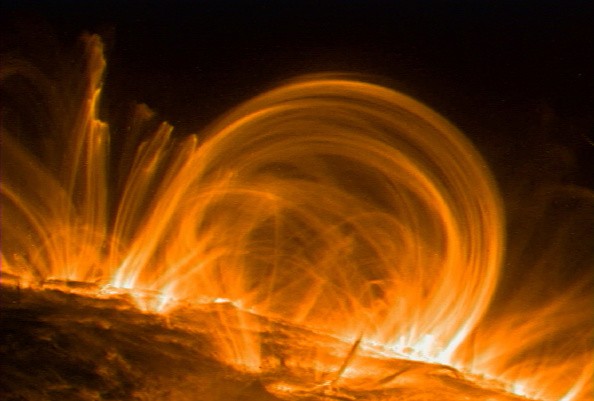A new giant solar flare was captured by NASA (National Aeronautics and Space Administration). The giant international space agency captured the sun's latest activity using its Solar Dynamics Observatory, which has been observing any changes in the solar system's host.

NASA said that the sun released a giant solar flare on Oct. 28, at exactly 11:35 a.m. EDT. On the other hand, NASA explained that solar flares are usually harmless since it they can't easily pass through the Earth's atmosphere.
The space company added that these radiation bursts from the sun couldn't directly affect humans. But, if the solar flare is too powerful, then it can affect communication signals, as well as interrupt GPS, as explained by NASA via its official Solar Cycle 25 blog post.
New Giant Solar Flare Blasts Off from the Sun
According to Space.Com's latest report, the new solar flare this October could be the strongest one released by the sun in its current weather cycle.

Also Read : NASA Hubble Space Telescope Experiences Problems, Now Remains in Safe Mode; Team Works on Fix
Although it is a massive radiation burst, NASA did not confirm if the new solar flare could actually harm people. However, the U.S. Space Weather Prediction Group confirmed that since the latest activity of the sun released some solar particles, wide-are radio communications blackouts are expected to happen.
"Area of impact consists of large portions of the sunlit side of Earth, strongest at the sub-solar point," said the American space organization.
The sun's new massive solar flare is just one of the space events recorded by NASA and other independent agencies. In other news, NASA spotted an exoplanet outside the Milky Way Galaxy.
Meanwhile, some experts claimed the Earth's rotation is actually slowing down.
October 2021 Solar Flare's Category
NASA explained that the latest solar flare this October is under the X1-class flare. This means that it is one of the most intense radiation bursts emitted by the sun.
But, X1 is just the first type in the X-class sunbursts. This means that X2, X3, X10, so on and so forth are more dangerous since they can harm people in some ways.
For more news updates about solar flares and other related space stories, always keep your tabs open here at TechTimes.
Related Article : Young Baby Exoplanet Named 2M0437b Found Heating at up to 2,240 ℉ Despite Being 100 Astronomical Units from Its 'Host Star'
This article is owned by TechTimes
Written by: Griffin Davis
ⓒ 2026 TECHTIMES.com All rights reserved. Do not reproduce without permission.




